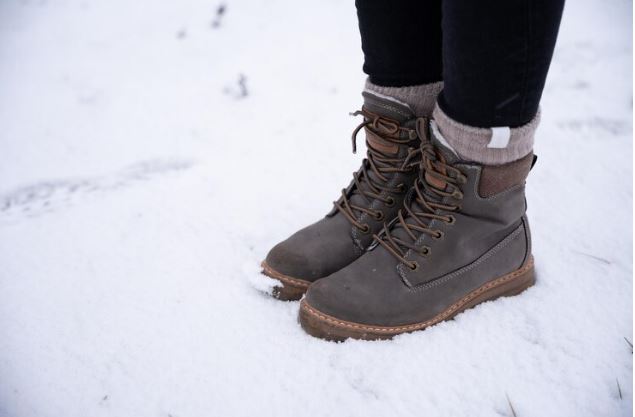As winter approaches, the quest for the perfect pair of boots becomes a priority. Whether you’re braving snow-covered streets or trekking through icy landscapes, having the right winter boots is essential for keeping your feet warm and dry. In this comprehensive buying guide, we’ll explore key factors to consider, from insulation to waterproofing, ensuring you find the ideal winter boots to tackle the chill with confidence.

Understanding Winter Boot Basics
1. The Importance of Winter-Specific Boots
Winter boots are designed with specific features to combat cold and wet conditions. Unlike regular boots, winter boots incorporate insulation, waterproofing, and specialized soles to provide optimal protection in cold, snowy, and icy environments.
2. Insulation: The Key to Warmth
a. Types of Insulation
Understanding insulation is crucial when choosing winter boots. Common insulation types include Thinsulate, PrimaLoft, and synthetic fibers. Thicker insulation is suitable for extremely cold climates, while lighter insulation is ideal for milder winter conditions.
b. Insulation Ratings
Pay attention to insulation ratings, usually measured in grams. Higher gram ratings indicate warmer boots. For everyday winter use, boots with 200 to 400 grams of insulation are generally sufficient.
Waterproofing: Keeping Dry in Winter Conditions
1. The Importance of Waterproofing
a. Materials and Membranes
Waterproofing materials like Gore-Tex and eVent membranes create a barrier against moisture, keeping your feet dry in snowy or wet conditions. Check for boots labeled as “waterproof” or “water-resistant.”
b. Sealed Seams
Boots with sealed seams add an extra layer of protection. Sealed seams prevent water from seeping into the boots through stitching, ensuring your feet stay dry even in slushy conditions.
2. Proper Boot Maintenance
a. Cleaning and Drying
Regularly clean and dry your winter boots to maintain their waterproofing. Dirt and salt can compromise the effectiveness of waterproof materials, so periodic cleaning is essential.
b. Reapplying Waterproofing Agents
Some boots may require reapplication of waterproofing agents over time. Follow the manufacturer’s recommendations to ensure continued protection against moisture.

Choosing the Right Style
1. Winter Boot Styles
a. Snow Boots
Designed for deep snow, snow boots typically feature high shafts to prevent snow from entering. Look for models with insulation and waterproofing for maximum winter protection.
b. Insulated Hiking Boots
For those who enjoy winter hikes, insulated hiking boots offer a balance between warmth and agility. They provide traction for uneven terrains while keeping your feet warm.
c. Fashionable Winter Boots
Fashion-forward winter boots blend style with functionality. Look for options with faux fur, shearling, or stylish details that make a statement while keeping you warm.
Finding the Right Fit
1. Sizing Considerations
a. Room for Warmth
Choose boots with enough room for thick socks. Proper air circulation is crucial for maintaining warmth, so avoid overly tight boots that restrict blood flow.
b. Testing with Socks
When trying on winter boots, wear the socks you intend to use in cold weather. This ensures an accurate fit, considering the additional layer of insulation.
2. Boot Height and Ankle Support
a. Tall Boots for Deep Snow
Tall boots are suitable for deep snow, providing extra protection against cold and wet conditions. They are ideal for activities like shoveling snow or walking in deep drifts.
b. Ankle Support for Activities
If you’re engaging in activities that require more ankle movement, such as hiking, opt for boots with ankle support. This provides stability on uneven terrain.
Additional Features to Consider
1. Traction and Grip
a. Lug Soles
Look for boots with lug soles for superior traction on slippery surfaces. Deep, multidirectional treads provide grip on snow and ice, ensuring stability in winter conditions.
b. Ice Cleats
For added traction in icy conditions, consider boots with removable ice cleats. These attachments enhance grip and prevent slips on icy surfaces.
2. Easy On and Off
a. Side Zippers or Slip-On Styles
Boots with side zippers or slip-on designs offer convenience, especially when dealing with multiple layers of clothing. They make it easier to put on and take off your boots in cold weather.
Making an Informed Purchase
1. Research and Reviews
a. Customer Reviews
Read customer reviews to gain insights into the performance of specific winter boots. Real-life experiences can help you make an informed decision based on the feedback of others.
b. Brand Reputation
Consider reputable brands known for their quality winter boots. Brands with a history of producing reliable winter footwear are likely to provide durable and effective options.
Conclusion: Stepping into Winter with Confidence
In conclusion, finding the perfect pair of winter boots involves considering factors such as insulation, waterproofing, style, fit, and additional features like traction. A well-informed decision ensures your feet stay warm and dry, allowing you to navigate the winter season with confidence.
Remember to prioritize functionality without sacrificing style, as the perfect winter boots offer a harmonious blend of both. Invest in quality, maintain your boots with care, and step into winter fully prepared to embrace the cold with warmth and style.




